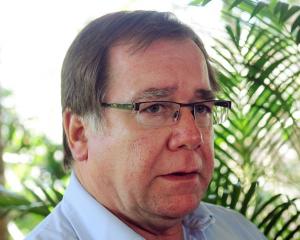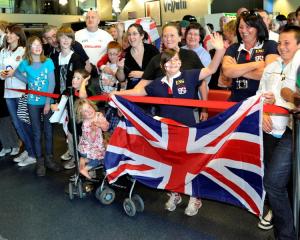What is most striking about the proposed temporary Maori pavilion on Auckland's waterfront for the Rugby World Cup is some of the reported public reaction. It is not possible to discern whether the negative responses were prompted by the estimated cost, the design, the exclusivity of purpose, the type of structure, the Government contribution of $1.8 million - or a combination of all of these.
Is it something to do with what seems to be an increasingly disquieted national mood? Or is it merely just another rumbling of the racism volcano that is never far from the surface in these shaky isles? Undoubtedly, the negative public reaction is out of proportion to what is actually proposed.
It is equally intriguing to note the belittling language being used by the critics. The pavilion, which is to be in the shape of a Maori canoe or waka, is invariably described as a "plastic waka", or, in the words of a Labour Party statement, a "joke" and a "blow-up plastic waka".
Labour has also criticised the fact that a large central Auckland tribe, Ngati Whatau o Orakei, is behind the project and will contribute $100,000 to the cost. But it is appropriate, indeed creditable, that a local tribe should be involved and prepared to back the scheme with its own money.
And if the Government rightly insists that the demountable pavilion be used for future Maori cultural promotions, and holds the tribe to this account, then its investment will surely provide a suitable return.
The Government, and its predecessor (which devised and approved a great proportion of state spending on the Rugby World Cup) have estimated hosting the tournament will generate more than $1.15 billion in total economic activity, with $500 million going directly into the local economy.
It will add $507 million to our gross domestic product, which is 23% more than was estimated by the Clark government when it decided to support the original bid. Tax revenues alone are expected to generate $112 million.
Although there will also be direct benefits to local economies in several regional centres - including Dunedin, Queenstown and Invercargill - it is Auckland, where the Maori pavilion will be sited, which will benefit most directly, gaining an estimated $240 million in additional gross domestic product, and $262 million in direct spending.
Furthermore, estimates of numbers of visitors expected in the country range as high as 85,000, along with 2500 international media representatives who will inform a global audience estimated at peak interest to be about a billion.
It might be thought advantageous to the country that at some point during the tournament, at a location with a likely high flow of visitors, it would be beneficial to have a display of one aspect of New Zealand that makes us unique in the world.
If this might be thought a touch excessive, consider the benefits to our country internationally when the remarkable (and far more expensive) Te Maori exhibition toured the United States in 1984, engendering an enormous sense of local pride.
The pavilion's critics argue that it alone will not attract a single visitor to this country, and perhaps they are right, but it will provide an opportunity for visitors to see an aspect of New Zealand that has nothing to do with rugby, just as many are expected to tour before or after the games.
Then, too, some critics are attacking the project because, they allege, it is a sop to the Maori Party partner in the governing coalition. This claim conveniently overlooks the context of the other facilities planned for the downtown area in connection with the cup.
The pavilion will be near a $9.8 million structure, funded by taxpayers, which will house trade displays for New Zealand industries. It is also expected to host events including a food and beverage exposition, displays of New Zealand high fashion and similar events including tourism-related promotions.
It is also relevant to note that alongside these facilities will be the $12 million inflatable rugby ball that has been used to promote the event overseas. The Labour Party describes the Maori pavilion as an "expensive indulgence", but on the basis of some of the costs of these other promotional activities, the nation may be getting a very good deal.
After all, the Government would justly be held to account if it did not take every reasonable opportunity to promote the country at such a time of unprecedented international exposure.




